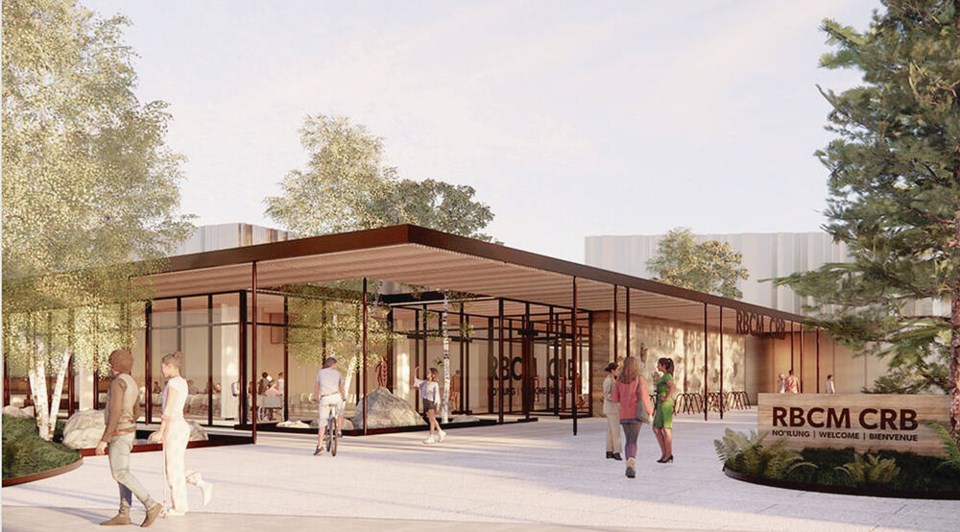Construction of the Royal B.C. Museum’s new collections and research building is expected to start this summer in Colwood’s Royal Bay neighbourhood — about a year later than originally planned and for millions more than originally budgeted.
The entire capital cost of the facility is $270 million, an increase of $45.6 million from the province’s most recent estimate in June 2021, and $93 million over what was presented in the budget and fiscal plan in April 2021.
The Ministry of Tourism and Culture said in a statement the escalating budget and delays reflect the rising costs of materials and labour amid global inflation, and an extended project schedule that increased planning, procurement and implementation costs. It also noted “an escalation on the design-build contract.”
Tourism Minister Lana Popham was not available for an interview to clarify the growing costs, but a statement from her ministry indicated the scope of the collections building shifted after the government pulled the plug on a $779-million Royal B.C. Museum replacement plan.
That plan called for tearing down the current museum on the Inner Harbour, described as inaccessible and riddled with asbestos, and building a new one.
Then-premier John Horgan scrapped the plan in June after a public outcry about cost, but the research and collections building stayed on the books, and its costs rose. “When we stopped the modernization project in June this year, we also looked at how our plans for the collections and research building would need to change,” the ministry statement said.
“The previous budget was based on estimates reflecting the project’s size and specifications.
“We now have a fixed price design-build contract.”
The ministry said the new cost estimate included revised quotes from B.C. Hydro on utility upgrades and costs of construction insurance.
Compensation of $1 million is also being paid to each of the unsuccessful proponents, based on the terms of the request for proposals. Those payouts are intended to partially cover the cost to participate in the request for proposals process.
The ministry, which didn’t reveal the number of proponents, said that is standard practice for major infrastructure design-build procurement to ensure “robust competition and high-quality, responsive submissions.”
Langley-based Maple Reinders Constructors Ltd. has been awarded a $204.8-million contract to design and build the research and collections building, which will be made primarily from mass timber, or engineered wood, manufactured in the province.
The province estimates the entire project will create 1,000 direct and indirect jobs during construction.
The building will likely open in the summer of 2026, the ministry said.
It will house the B.C. Archives — currently below sea level at the downtown Royal B.C. Museum and at risk of flooding — in a temperature-controlled setting.
The archives contain the province’s collection of rare books and manuscripts, early maps and priceless pieces of art, including Emily Carr paintings, plus watercolours from the 1700s.
The 163,611-square-foot building will also provide dedicated research labs and learning spaces open to the public, and is designed to show more of the museum’s collection of about seven million artifacts.
As it stands, less than one per cent of the province’s museum and archives collection is accessible to the public.
“Alongside the safe and modern storage of the collections and provincial records, the [collections and research building] will be a dynamic and welcoming community space,” Alicia Dubois, chief executive of the Royal B.C. Museum, said in a statement. “We hope to inspire future paleontologists, entomologists, botanists and historians through greater learning opportunities by enhancing public access to our work.”
Songhees Chief Ron Sam said the nation looks forward to providing guidance and direction in the design, as well as workers and contractors for the construction of the building on Lekwungen territory.
“This project will be a valuable resource for many generations to come, and highlights the need for collaboration while building respectful relationships between Indigenous communities and museums.”
>>> To comment on this article, write a letter to the editor: [email protected]



